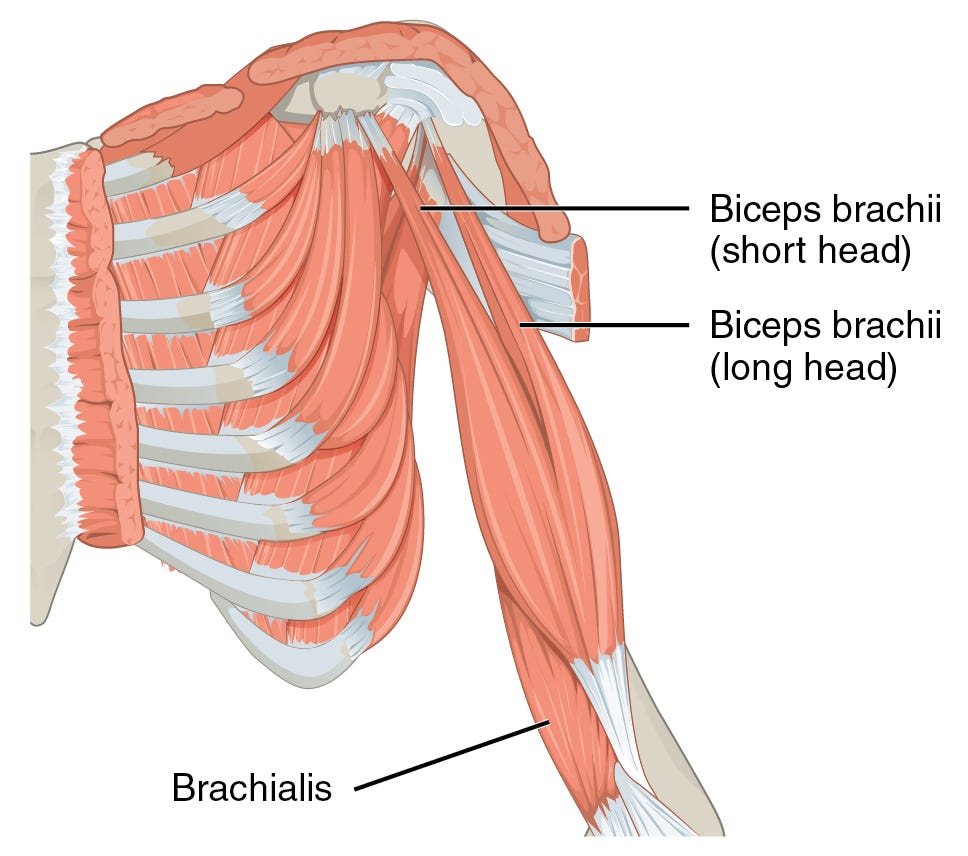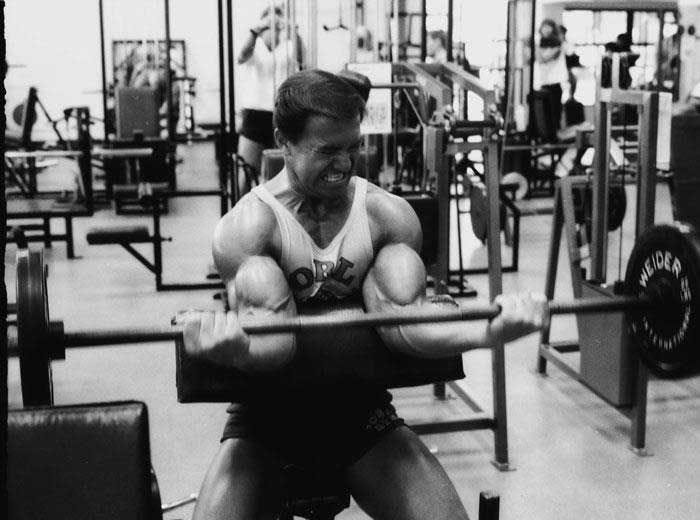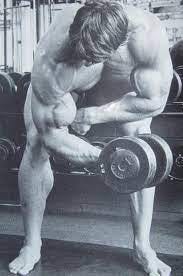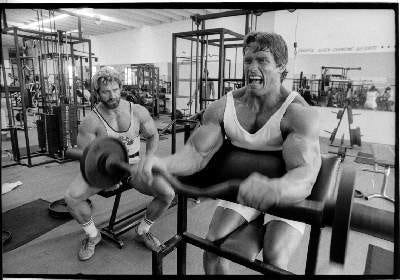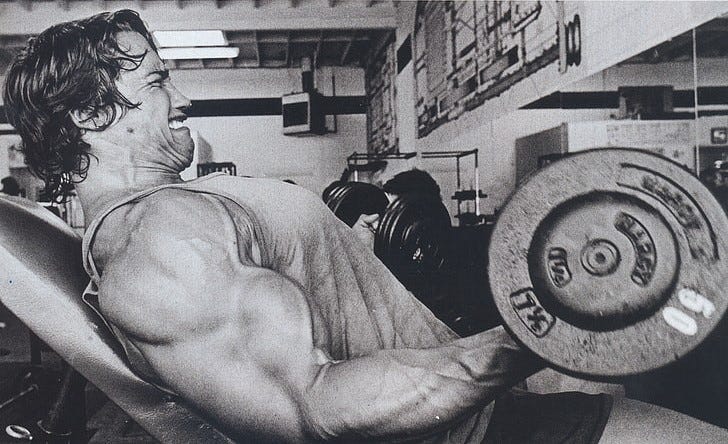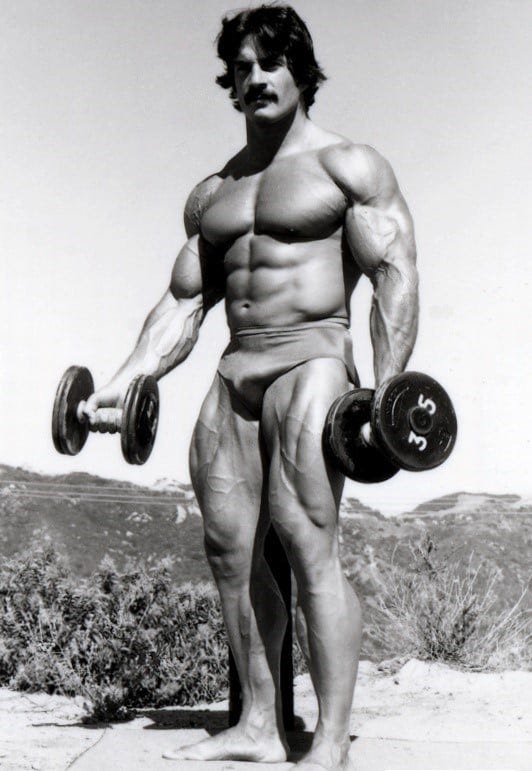Back in my day all we wanted to do in the gym was biceps and chest. Nowadays, many of the kids I work with want to be flexible, they don’t want to be too bulky, or they have a lofty idea about being strong. Can’t relate. This article is to bring us back to our roots, to build the bulging pipes you always wanted despite never admitting it. The purpose of this article is to provide an anatomical approach to training your biceps. The best training always combines the science with art so we close off the article with common finishers you can implement to leave the gym with a nasty pump. Let’s get to it.
Bicep Anatomy Basics
As the name implies, the biceps are composed of two heads: the long head and the short head. The biceps are predominantly composed of type 2 (fast twitch) muscle fibers. A major function of the biceps is flexion and supination of the forearm. Although, the short and long head of the biceps brachii aren’t the strongest contributor to flexion of the forearm. The brachialis muscle near the elbow joint provides the greatest strength for forearm flexion. Increasing the size of the brachialis is usually what contributes to the biceps “popping” out more on some lifters compared to others. The brachialis sits underneath the biceps brachii and can be biased with slightly different positioning than one would use to train the long and short heads of the biceps brachii.
The brachialis is more active with a pronated or neutral position. Think about exercises like a hammer curl or reverse curl where the palms are parallel to each other or the floor as opposed to palms facing the ceiling (supinated). The short head of the biceps brachii is located on the inside of the arm. It’s most active with a wider supinated grip and when the elbows are tucked in against the sides. This could be as simple as putting the palms up for a barbell curl and widening the grip a couple inches out from shoulder width. It also helps to have the elbows travel infront of the body to target the short head more effectively.
Conversely, the long head of the biceps brachii is best targeted with the elbows behind the shoulder joint. It is located on the outside of the arm, right next to the short head. Typically, the long head isn’t as wide as the short head. When people refer to the bicep “peak” they are typically talking about the long head of the biceps. The long head functions more as an internal rotator of the arm than the short. A closer grip curl or exercises where the elbows travel behind the torso will most target the long head.
The closer your hands are to your torso, the more long head you’ll activate. Keeping the arms further away from the torso will bias the short head.
Keep in mind, there is no way to individually isolate the long head, short head, or brachialis. They’re all active during forearm supination and flexion. However, with the cues above and movements below you can bias your training to target parts of the biceps preferentially and beef up lagging parts of your arm musculature.
Exercises For the Long Head
Incline Dumbbell Curl (lay back)
Drag Curl (Dumbbell, Barbell, Smith Machine, or Cable)
Seated Curls
Exercises For the Short Head
Preacher Curl
Wider Grip Curls (supinated)
Concentration Curls
Spider Curls
Exercises For The Brachialis
Hammer Curl (dumbbells or cable rope)
Pinwheel / Cross Body Hammer Curl
Reverse Curl (straight or EZ Bar)
Zottman Curls
Programming for Biceps
I’m a big proponent of compound movements for muscle growth. This doesn’t change for the biceps. We can see some of the biggest pipes on olympic gymnasts for a reason. While i’m sure they may add in some curls to their strength and conditioning, they are largely developing pulling strength and arm size through pulling their own body weight on rings and bars. Movements like the chin up especially can be a powerful addition for increasing bicep strength and size.
Compound Movements for Biceps
Supinated Pulldowns
Supinated Rows
Chin-ups (Neutral Grip & Supinated)
After smashing some heavy compound movements the isolation exercises can be placed in to finish off the bicep fibers. This is where we add curl variations from different angles and rep ranges. Whenever hitting any isolation movement I highly recommend focusing on the mind muscle connection (MMC). What was once a bro science myth with extensive anecdotal evidence now has scientific support.
The greater focus you put into contracting a given muscle, the more muscle fibers you’ll end up recruiting. More recruitment in turn can break down more fibers and lead to greater hypertrophy. I would recommend only using the MMC for isolation exercises instead of compound movements since the MMC will slow down velocity. Performing movements slower (but not slow) is great for hypertrophy, but not ideal for gaining strength where there should be more intent placed on moving powerfully through the concentric (lifting) phase. Perform the compound movements with good power then follow up with isolation exercises to squeeze and really feel the biceps. This way you get the best of both worlds: You gain pulling strength and maximize bicep size.
A dumbbell and barbell curl may look like the same movement, however you’ll typically get greater range of motion with dumbbells. I would recommend most of your isolation exercises come from dumbbells, this doesn’t however mean every exercise for your biceps should be with dumbbells. Typically anything with a pronated grip will feel better with the barbell. More range of motion does a couple of things: you get more time under tension for the muscle and a greater stretch which could also lead to a little bit of extra hypertrophy.
Avoid swinging your entire body into the movement. This isn’t a curling contest. Even if it was, they make you lean against a wall during a strict curl competition to minimize swinging of the torso. However, if you just wanna rip it for some strict curls every now and then for a set of two, go right ahead. Just realize there’s a reason a lot of the guys training to be big and strong don’t do many cheat curls. You get a heck of a lot more mechanical tension by contracting the muscle under control.
A variation I like for anybody that’s accustomed to using their entire body on a curl is the dumbbell strict curl. Simply lean against the wall and don’t let your upper back leave the wall while curling. You’ll probably feel an insane pump if you drop the weight and implement strict curls with good MMC.
Remember to use movements from above that work the short head, long head, and brachialis to get fully developed biceps. Pick one exercise from each category and plug it into your training plan, then switch up the exercise for the given category every 3-4 weeks. I would recommend 2-3 bicep movements on a pull day or 1-2 on an upper body day.
How to split training for 2x a week upper body / pull day frequencies.
Long Head = Group A
Short Head = Group B
Brachialis = Group C
Avoiding Injury
There are a couple of activities that come in mind when it comes to bicep injuries. Very few things we do in our daily lives require pulling, and therefore most of us just won’t strain the biceps enough in day to day living to cause a major injury. However, manual labor jobs, recreational sports like grappling or gymnastics, or doing cheat curls could cause issues. Low bar squatting for powerlifters also tends to cause elbow pain that can pop-up during pressing or certain bicep isolation movements.
There are a couple tools in the arsenal to avoid bicep injuries. Keep top notch form and control throughout the movement would be the main cue to keep it mind. Below is a video of what can happen if you want to risk it for the biscuit for instagram clout or just to satisfy your ego.
As a rule of thumb, avoid any weight that you can’t control with a good negative (eccentric). If you need to swing the weight up, it’s probably too heavy and you won’t get the same level of MMC as you would with lighter weight. Curling 405 is cool, not tearing your bicep is cooler.
Movement Selection
I generally recommend sticking with movements that feel best. Whatever movements allow you to feel your biceps working and get you the biggest pump are the ones you should pour into. I asked John Meadows at a seminar one time what he does if he’s doing a planned exercise and just isn’t feeling it that day for whatever reason. He told me he just changes the movement to something that feels better even if it wasn’t planned for the day. I recommend doing the same for any isolation movement. Give movements their fair shake, but if after a few weeks they’re just not working for you (i.e., you feel a certain type of curl in your forearms but not your biceps), perhaps try something else.
As with anything, I recommend rotating exercises every few weeks. Typically a 3 week wave is what I’ll use and after 3 weeks i’ll change the movement. Keep it simple, if you like dumbbell curls maybe change those to a hammer curl or dumbbell curl from an incline. You can even just change the angle by 15 degrees on the bench or simply perform curls strict against the wall. How variations are used doesn’t have to be complicated. Just because you’re rotating movements doesn’t mean you need a super novel stimulus every 3 weeks. Even just a small angle change in wrist or elbow position is enough to nudge your to adapt to something new.
Bicep Finishers
Let’s be real, it isn’t a successful bicep day unless you get a massive sleeve filling pump. This is where finishers come into play and there are several that are popular for bicep training. Finishers are intense and, like the name implies, they should be used to finish the training session. All finishers should be high volume to gorge the biceps with blood and metabolic byproducts.
Twenty Ones
The almighty 21’s have been popular for decades. Grab a barbell and begin with 7 half reps from the bottom to the half way point, then 7 reps from halfway to top, then 7 reps with full range of motion.
Run The Rack
Start with light dumbbells and perform 8-15 reps, then put the dumbbells down and rest 10 seconds, then grab the next heavier ones. Keep repeating until you can no longer hit 8 reps per set. You can work your way back down the rack if the pump just from going up wasn’t good enough.
Dropsets
Drop sets are a frequently used bodybuilding method for a lot of muscle groups. Pick a weight and perform it for 8 to 15 reps, then rest 10 to 15 seconds, pickup a weight that’s 25-33% lighter and hit it for as many reps as possible.
Takeaways
People want to throw their entire body into a bicep curl but they would get more out of performing the movement super strict or with just a tasteful amount of body english with a controlled eccentric. There are 3 parts of the biceps: The long head, short head, and brachialis. The
Long head - targeted when the elbows are more behind the body
Short head - targeted when the elbows go forward in relation to the torso
Brachialis - best trained with a neutral or hammer grip.
Train hard and progress your reps or weight whenever possible. Don’t be afraid of failure, approach it often. There is such thing as too much bicep training, find the right volume that still gets you progress.




